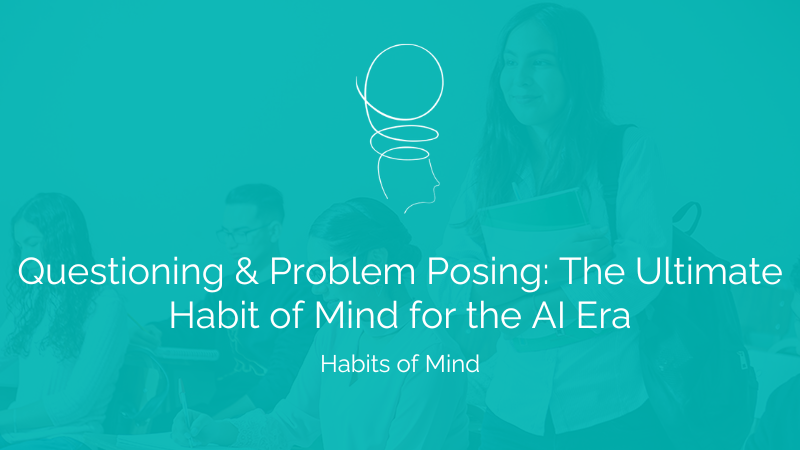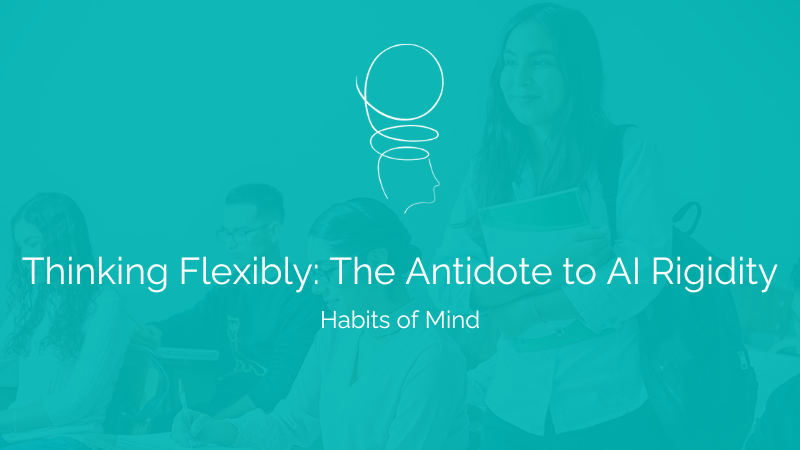Throughout this series, we’ve explored how our language and approaches around risk, mistakes, struggle, and challenge can either reinforce hesitation or build confidence in learners. Now let’s bring these ideas together to address a fundamental question: How do we create learners who don’t just tolerate challenge, but actively seek it out?
This question cuts to the heart of education’s purpose. In a world of accelerating change, the ability to tackle unfamiliar challenges effectively is perhaps the most valuable capability we can develop in our students. I call this “Learnership”—the expertise one develops in learning itself.
The Challenge-Positive Classroom
Let’s envision what a truly challenge-positive classroom looks like:
- Students choosing more difficult tasks when given options
- Expressions of interest rather than dread when new challenges are introduced
- Productive persistence through difficulties rather than quick surrender
- Strategic approaches to obstacles rather than emotional reactions
- Celebration of progress through difficulty rather than just final outcomes
This environment doesn’t happen by accident. It’s created through deliberate attention to the principles we’ve discussed throughout this series.
Five Key Principles
Here are five key principles that combine the insights from our previous discussions:
1: Reframe the Challenge as an Opportunity
Challenge isn’t something to be endured—it’s the pathway to growth. Help students see that the feeling of difficulty is a signal they’re in their Learning Zone, where capabilities are being built.
Classroom application: Create visual reminders like “Welcome to your Learning Zone” and regularly highlight how specific challenges are developing valuable capabilities.
2. Develop Healthy Relationships with Difficulty
“Easy is earned”—difficulty isn’t a permanent state but a temporary condition that changes as capabilities develop. Help students recognize that what feels hard today will feel easier with practice and refinement.
Classroom application: Regularly revisit previously challenging material to highlight how it now feels easier, making the learning process visible.
3. Value Productive Mistakes
Not all mistakes are created equal. Help students distinguish between valuable stretch, design, and aha mistakes versus less useful sloppy mistakes and more problematic performance mistakes.
Classroom application: Create “valuable mistake of the week” highlights that showcase how specific errors led to important insights or improvements.
4. Support Without Rescuing
Productive struggle builds capability. Learn to distinguish between productive discomfort and genuine anxiety, and provide support that empowers rather than rescues.
Classroom application: Use coaching questions rather than direct answers when students encounter difficulty: “What have you tried?” “Where specifically are you stuck?” “What information might help?”
5. Measure Growth, Not Just Performance
Help students focus on their progress rather than just their current performance level. This builds confidence in their ability to improve through effective effort.
Classroom application: Implement regular reflection opportunities where students identify specific ways they’ve grown and capabilities they’ve developed.
Creating a Coherent Ecosystem
These principles don’t work in isolation—they form an ecosystem that nurtures challenge-seeking learners. Here’s how they interact:
- When challenge is reframed as opportunity, students are more willing to engage with it
- When they understand “easy is earned,” they see difficulty as temporary, not permanent
- When they value productive mistakes, they’re less afraid to attempt challenging tasks
- When they receive support without rescue, they develop capability rather than dependency
- When growth is measured, not just performance, they see tangible evidence of their development
Together, these principles create a self-reinforcing cycle that transforms students’ relationship with learning itself.
The Ultimate Goal: Creatures of Discomfort
When these principles become embedded in classroom culture, something remarkable happens: students begin to seek challenge rather than avoid it. They develop what psychologist Carol Dweck calls a “growth mindset” and what I expand on as a “Learning Mindset”—the belief that abilities can be developed through dedication and purposeful effort.
The ultimate goal isn’t just academic achievement. It’s developing what I call “creatures of discomfort”—learners who are equipped to thrive in an increasingly complex world because they see challenges as opportunities to grow stronger.
Beyond the Classroom
These principles extend beyond school. By helping parents understand these concepts, teachers can create a consistent message across environments. Some key points to share with parents:
- The difference between productive struggle and harmful stress
- How to support without rescuing
- The importance of celebrating challenge engagement, not just achievement
- Language that reinforces a healthy relationship with difficulty
Your Role as a Teacher
As educators, we have the privilege of shaping not just what students know, but how they approach learning itself. By rethinking our language and practices around challenge, we can help develop learners who don’t just cope with difficulty but actively seek it out as a pathway to growth.
This isn’t just about academic success—it’s about preparing students for a world where the ability to learn, adapt, and grow through challenge will be the ultimate advantage.
What steps have you taken to build a challenge-positive culture in your classroom? How have you seen students transform their relationship with difficulty? I’d love to hear your experiences.
This concludes our “From a Safe Place to a Growth Place” series. For more on developing powerful learners, please visit jamesanderson.com.au



